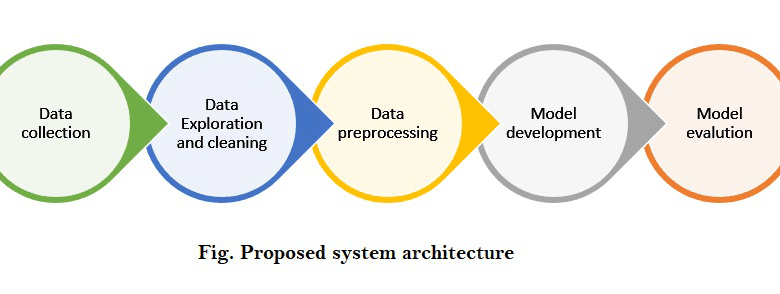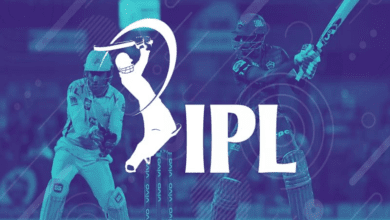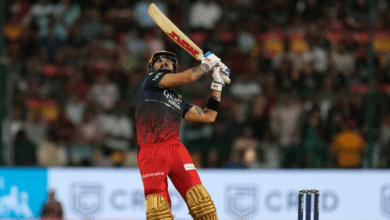How to Analyze IPL Match Statistics Insights for Better Predictions

How to Analyze IPL Match Statistics Insights for Better Predictions, The Indian Premier League (IPL) is one of the most exciting cricket tournaments in the world, captivating millions of fans with its thrilling matches and star-studded lineups. As a cricket enthusiast, if you want to make more accurate predictions about IPL matches, analyzing match statistics can provide valuable insights. In this article, we will explore some key steps to help you analyze IPL match statistics effectively.
Understand the Team Performance
To begin your analysis, it’s essential to understand the performance of the teams involved in the IPL match. Here are some key aspects to consider:
1. Recent Form: Assess the team’s recent performance by analyzing their results in the previous matches. Look for patterns such as winning streaks, losing streaks, or inconsistency. A team in good form is likely to carry forward their momentum into the upcoming match.
2. Previous Match Results: Dive deeper into the team’s recent match results. Consider the margin of victory or defeat, as it can indicate the team’s dominance or vulnerability. Pay attention to any significant performances by individual players or notable team strategies employed.
3. Head-to-Head Records: Explore the historical head-to-head records between the two teams. Analyze their performance against each other in previous IPL seasons. Some teams may have a consistent advantage over others due to various factors, such as playing styles, team dynamics, or favorable matchups.
4. Batting Performance: Evaluate the team’s batting strength. Look at their average runs scored per match, the run rate (runs per over), and the number of boundaries hit. Consider the individual batting records of key players, their strike rates, and consistency. A team with a strong batting lineup can put up formidable totals or chase down challenging targets.
5. Bowling Performance: Assess the team’s bowling capabilities. Look at their average runs conceded per match, economy rates (runs per over), and the number of wickets taken. Analyze the individual bowling records of key players, their ability to take wickets, and their economy rates. A team with a potent bowling attack can restrict the opposition’s scoring and take crucial wickets.
6. Fielding Performance: Don’t overlook the importance of fielding. Analyze the team’s fielding statistics, such as the number of catches, run-outs, and fielding errors. A team with exceptional fielding skills can create additional opportunities to turn the game in their favor and save crucial runs.
By understanding the team’s recent form, previous match results, head-to-head records, batting and bowling performance, and fielding capabilities, you can gain valuable insights into their overall performance. This analysis forms a solid foundation for predicting their performance in the upcoming IPL match.
Remember, cricket is a dynamic sport, and there are several variables at play, so consider these factors along with other aspects like team dynamics, injuries, and strategic decisions to develop a comprehensive understanding of a team’s performance.
How to Analyze IPL Match Statistics Insights for Better Predictions
Assess Player Performance
Assessing player performance is crucial when analyzing IPL match statistics. Here are some key factors to consider:
1. Recent Form: Evaluate the recent form of individual players. Look at their performance in the recent matches leading up to the IPL game you’re analyzing. Consider their batting averages, bowling averages, and all-round contributions. Players in good form are more likely to have a positive impact on the match.
2. Batting Performance: Analyze the batting performance of key players. Look at their batting averages, strike rates, and the number of runs scored in recent matches. Consider their consistency in scoring runs and their ability to adapt to different match situations. Take note of their performance against specific types of bowling, such as facing spinners or pacers.
3. Bowling Performance: Evaluate the bowling performance of key players. Consider their bowling averages, economy rates, and the number of wickets taken in recent matches. Assess their ability to control the run flow, take crucial wickets, and apply pressure on the opposition batsmen. Look for any variations in their bowling strategies or success in different match conditions.
4. All-Round Contributions: Pay attention to players who contribute with both bat and ball. Evaluate their overall impact on the game by considering their batting and bowling averages, as well as their ability to provide breakthroughs or stabilize the team when needed. All-rounders can significantly influence the match outcome.
5. Head-to-Head Records: Analyze the performance of individual players against specific opponents. Some players might have a better record against certain teams or struggle against particular bowlers. Consider their past performances in head-to-head matchups, as these records can give insights into their ability to perform under specific conditions or against particular oppositions.
6. Player Roles and Responsibilities: Understand the roles and responsibilities of players within their respective teams. Some players might have specific roles, such as opening batsmen, middle-order anchors, power-hitters, death overs specialists, or frontline bowlers. Analyze how effectively players fulfill their roles and contribute to the team’s overall strategy.
7. Impact on Team Dynamics: Assess the impact of key players on the team’s overall dynamics. Consider their leadership qualities, experience, and ability to motivate and inspire teammates. Strong team chemistry and individual contributions can greatly impact the team’s performance.
By evaluating the recent form, batting and bowling performance, all-round contributions, head-to-head records, player roles, and impact on team dynamics, you can gain valuable insights into individual player performance. These insights will aid in predicting how players might perform in the upcoming IPL match and their potential influence on the overall result.

Analyze Venue and Pitch Conditions
The venue and pitch conditions can heavily influence match outcomes. Some pitches favor spinners, while others are more suited to fast bowlers or batsmen. Analyze the past matches played at the venue and observe the average scores, run rates, and wicket-taking patterns. Consider the weather conditions, such as dew, which can impact bowling and fielding strategies. Understanding these factors will give you an edge in predicting how teams will fare at a particular venue.
Evaluate Head-to-Head Records
Head-to-head records provide valuable insights into how teams have historically performed against each other. Analyze the results of past encounters, paying attention to the venue, pitch conditions, and the overall performance of key players. Some teams might have a psychological advantage over others, and certain players might excel against specific opponents. These records can offer significant cues for predicting outcomes.
Consider Toss and Team Composition
The toss plays a crucial role in T20 matches as it determines which team bats or bowls first. Analyze the impact of the toss on match results, especially at specific venues. Additionally, take note of any changes in team composition, including player injuries, replacements, or strategic alterations made by the teams. These factors can have a considerable impact on the match dynamics.
Utilize Statistical Tools and Analysis
To make your IPL match predictions more data-driven, leverage statistical tools and analysis. Explore websites, apps, or cricket analytics platforms that provide comprehensive statistics and insights. Look for trends, patterns, and statistical correlations that can help you make more accurate predictions. Incorporating data-driven analysis will enhance your understanding and increase the accuracy of your predictions.
Conclusion
Analyzing IPL match statistics provides valuable insights for making better predictions. By following the steps outlined in this article, you can enhance your understanding of team performance and individual player contributions, leading to more informed predictions. Let’s summarize the key points:
- Understand the Team Performance: Assess the team’s recent form, previous match results, head-to-head records, batting performance, bowling performance, and fielding capabilities.
- Assess Player Performance: Evaluate the recent form of players, their batting and bowling performance, all-round contributions, head-to-head records, player roles, and impact on team dynamics.
Remember that cricket is a dynamic sport, and unpredictable outcomes are always possible. While statistical analysis can provide valuable insights, it is essential to consider other factors like injuries, team dynamics, and match conditions.
To further improve your predictions, utilize statistical tools and analysis available through websites, apps, or cricket analytics platforms. These resources can offer trends, patterns, and statistical correlations to support your decision-making process.
Keep in mind that no prediction is foolproof, and surprises can happen in cricket. However, a thorough analysis of IPL match statistics increases your chances of making accurate predictions and enhances your overall understanding of the game.
So, dive into the world of IPL match statistics, explore the data, and enjoy the excitement of predicting outcomes based on informed analysis. Happy predicting!
FAQs
Q1: How important is analyzing IPL match statistics for making predictions?
A1: Analyzing IPL match statistics is crucial for making informed predictions. It provides valuable insights into team performance, player contributions, and historical records, which can significantly enhance the accuracy of your predictions.
Q2: What are the key factors to consider when analyzing team performance in IPL matches?
A2: When analyzing team performance, consider factors such as recent form, previous match results, head-to-head records, batting performance, bowling performance, and fielding capabilities. These factors provide a comprehensive understanding of a team’s strengths and weaknesses.
Q3: How can player performance analysis impact IPL match predictions?
A3: Assessing player performance allows you to gauge the impact of key players on the match outcome. Consider factors such as recent form, batting performance, bowling performance, all-round contributions, head-to-head records, player roles, and their impact on team dynamics. This analysis helps you predict individual player performance and their potential influence on the match result.
Q4: Are there any statistical tools or resources available for analyzing IPL match statistics?
A4: Yes, several statistical tools, websites, apps, and cricket analytics platforms provide comprehensive IPL match statistics and insights. These resources offer trends, patterns, and statistical correlations that can support your analysis and improve the accuracy of your predictions.
Q5: How should I consider unpredictable factors like injuries or changes in team composition when analyzing IPL match statistics?
A5: While analyzing statistics is important, it is crucial to consider unpredictable factors like injuries, changes in team composition, and match conditions. Stay updated with the latest news and information about teams, players, and any changes that might impact the match dynamics. Incorporate these factors into your analysis to make more accurate predictions.
Also Read–
How to Choose the Right Cricket Ball: Types and Considerations
How to Bet Responsibly on IPL Matches
How to Select the Right Cricket Bat: Size, Weight, and Material Guide





